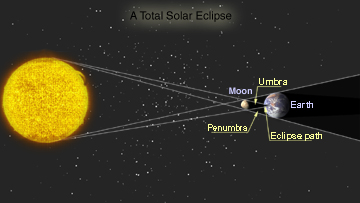This is a diagram of a typical solar eclipse. During a total solar eclipse, the umbra reaches the Earth. During an annular eclipse, it does not. An eclipse occurs when the Moon passes in the path of the Sun and Earth.
Click on image for full size
Windows to the Universe original image
Solar Eclipses
An eclipse of the Sun occurs when the Earth passes through the Moon's shadow.
A total eclipse of the Sun takes place only during a new moon, when
the Moon is directly between the Sun and the Earth.
When a total eclipse does occur, the Moon's shadow covers only a small portion of the Earth, where the eclipse is visible. As the Moon moves in its orbit, the position of
the shadow changes, so total solar eclipses usually only last a minute or two in a given location.
In ancient times, people were frightened by solar eclipses (even back then
people realized that the Sun was essential to life on Earth). Now eclipses are of great interest to the public and to astronomers.
Eclipses provide an opportunity to view the Sun's outer atmosphere,
the solar corona.
If you ever get to view a solar eclipse, make sure to never look at the Sun directly! Always use one of these safe techniques.
You might also be interested in:
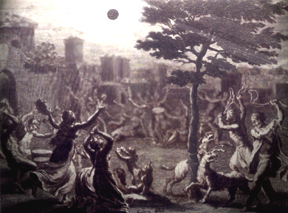
Eclipses have been watched for centuries, but it was only recently that we understood what really occurs. Eclipses have always been fascinating to watch, but they weren't always welcome. For many years,
...more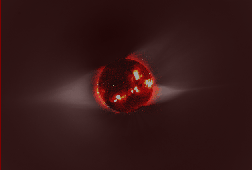
Rising above the Sun's chromosphere , the temperature jumps sharply from a few tens of thousands of kelvins to as much as a few million kelvins in the Sun's outer atmosphere, the solar corona. Understanding
...more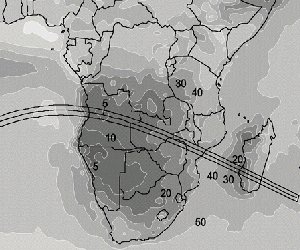
On Thursday, June 21, 2001, there will be a total eclipse of the Sun. The eclipse will only be visible from parts of Africa and Madagascar. The triple line on the image to the left shows the path of where
...more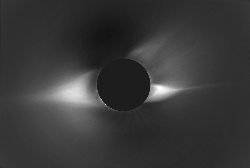
The last solar eclipse of this millennium occurred on August 11, 1999. Amateurs and scientists witnessed a truly awesome site. This was a total eclipse, which means the Moon completely covered the Sun.
...more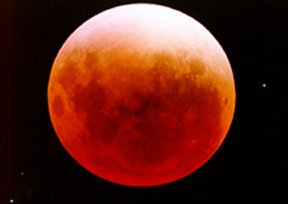
The last lunar eclipse of the millennium in North America is this week! On January 20, 2000, which is Thursday for those living in North America, a total lunar eclipse will occur. A lunar eclipse is different
...more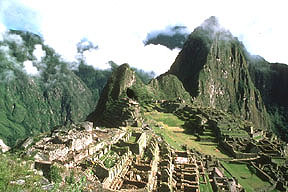
Peru's new president, Alejandro Toledo, was sworn in on July 28, 2001. The next day he visited Machu Picchu and Cuzco. There were ceremonies at both locations where Toledo asked for the blessing of the
...more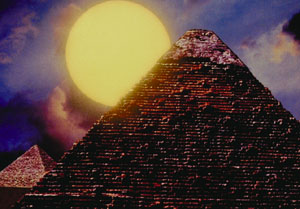
There is a solar eclipse coming to a movie theater near you! Actually, this is better than a theater! This is the real thing! There will be a total solar eclipse on February 26th. The total eclipse will
...more


